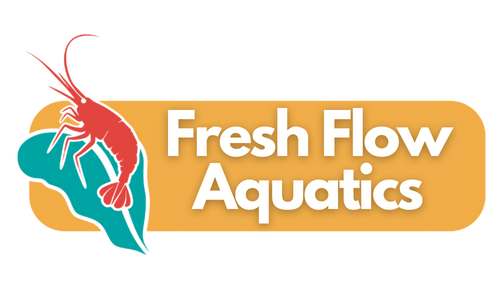Setting up your first nature aquarium
Setting up your first nature aquarium doesn’t have to be hard. I’ll walk you through the basic items that you’ll need in order to get going.
If you’re wondering what a nature aquarium is, it’s a natural looking aquarium that draws inspiration from nature. Basically you will use some rocks, sticks and live plants to make things look natural for yourself, and for the inhabitants of your aquarium.
A video showing the process of setting this tank up.
Although nature aquariums have been around for ages, a legendary man named Takashi Amano revolutionized the way nature aquariums were set up. A professional nature photographer turned aquarium aficionado, Takashi Amano truly transformed the modern nature aquarium into living pieces of art. I don’t have permission to show any of his aquariums, but you should hop onto his website and check out some of his designs - here.
Checklist
So what are the basics of a nature aquarium? Here’s a checklist for you to follow if you’re interested in setting up your first nature aquarium.
Aquarium
If you live in the U.S., most big stores will offer incredible deals on tanks that come with a stand, filter, heater and lights. Unfortunately the filter and lights are usually not adequate for keeping a quality nature aquarium. Regardless, the deals are sometimes so affordable that it’s worth getting the tank/stand and then buying additional lights or filters. It’s always good to have some extra gear on standby anyways.
Stand
If you went with the suggested option above, you’re covered. If you want to place your tank on furniture you already have, just remember that aquariums are heavy. Freshwater is about 8lb/gallon. Everything that sinks in water, like rocks and gravel, are more than 8 lb/gallon. To be safe, lets assume that your aquarium is about 10 lb/gallon. Even a small tank of 10 gallons is going to be about 100 lb, so make sure your stand or makeshift stand is sturdy! Lastly, make sure the whole base of the aquarium is supported. Don’t let the corners hang off the side of the stand. That could lead to compromised structural integrity of your aquarium!
Plant substrate
Good plant substrate is so important. Look for something that is clay-based. It’s an excellent source of nutrition for plants, but also provides an excellent home for beneficial bacteria that help maintain water quality. Can’t beat that clay-based substrate! My personal favorite is Seachem Flourite, although it’s not ideal if you have some types of bottom-feeding catfish or loaches. Its course texture will scratch the fish up.
Heater
If you live somewhere where the temperature gets below 74°F, you’ll need a heater to keep tropical fish. Some species will need warmer water, up to the low 80s. In order to consistently provide those temperatures, use a heater with the right wattage rating for your size aquarium.
Lighting
Aquatics plants require light, just like plants in your garden. Without an adequate light source, aquarium plants tend to die off, which causes algae growth. Although you can spend crazy amounts of money on really cool aquarium lights, there are plenty of terrific budget lights out there. Nicrew is one of my favorites.
Filter
A filter that cycles 5 - 7 times your total aquarium volume per hour is recommended for planted aquariums. You can get hang-on-back filters, canisters, or sumps. You can also go with the cheaper sponge filter, but will likely experience some decent fights with algae because of a lack of water movement.
Water conditioning
There are a lot of products you can use to condition water to be more suitable for your fish and/or plants. At the least, you’ll need to dechlorinate your water, assuming you are using tap water with chlorine.
Liquid fertilizers are a great way to boost your plant growth. If you have epiphytes, they’ll need liquid fertilizer because they won’t be able to access the clay based substrate.
Carbone dioxide (CO²) is by no means required for a planted aquarium. It provides plants with a source of easily accessible carbon, an element needed for growth. It brings out the lush, vivacious side of any aquatic plant. The first time I used CO², the results were so stunning I felt like I had cheated, like I was injecting ‘roids in my tank. If you want better results in your planted tank, start here!
Bacteria can also be added to new tanks to jump start the nitrogen cycle. It’s not necessary but will speed up the process so you can add fish to your aquarium sooner.
Wood, rocks & plants
You can get wood and rocks at the fish store, or you can find them outside. Make sure to stay away from water-logged woods and woods where you can smell resins, like from a fresh cut pine. Old branches or roots that have been sitting in the sun for years are the best ones to pick.
You’ll want to stay away from certain types of rocks that leach minerals into the water, like limestone. Granite and river stone are two pretty common types of rocks that are safe to put in your aquarium. Make sure to wash off wood and rocks before placing them in your tank.
After you place your wood and rocks, its time to plant! Make sure to get healthy plants so that your aquarium starts off on the right foot.
Patience
No matter how densely you plant your aquarium, it will always take AT LEAST few months to start looking grown in. The less you mess with pulling plants out and putting new ones in, the faster the aquarium will mature. It can be hard to wait for the results you’ve envisioned, but you’ll get there!
Day 2
2 months
4 months
6 months





